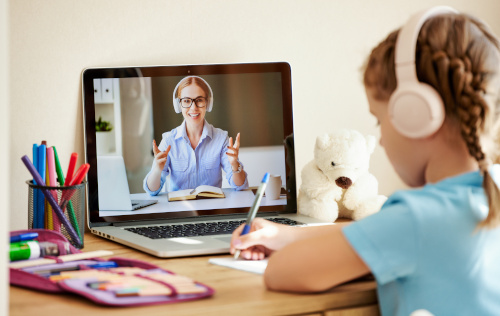Ed Smylie is my hero. You may not recognize the name, but you probably remember that scene in Apollo 13 when, upon discovering the spacecraft’s lethally rising CO2 levels and the dilemma of mismatched equipment, flight director Gene Kranz commands his team to “invent a way to put a square peg into a round hole. Rapidly.” Engineer Ed Smylie led the way in an all-night race to do just that. Using nothing but the materials on hand, his quick thinking and adaptability saved the astronauts’ lives.
Spring 2020 required teachers to become Ed Smylie. Nearly every tool we normally used to reach our students was wiped off the table–we were left in complete upheaval. With no choice but to use whatever we had available, we dug deep into our resourcefulness to help our students (and ourselves!) survive distance learning. Amazingly, what we did served our purposes not only for the duration of remote learning, but changed our classroom practices for the better, even now with students back in the classroom.
Once the initial lockdown passed, my district allowed staff to teach from their classrooms (albeit empty ones), pushing us to find new methods of instruction. Just days before the shutdown, a new flat panel had been installed in my room; it seemed to be the perfect time to see what it could do.
Building relationships with students during pandemic learning
Teachers know that proximity is one of the most powerful tools in their toolbox. Moving about the room and interacting with students is crucial, not only for effective classroom management but for the basic camaraderie needed to have smooth working relationships with students.
Distance learning forced us to find new ways to achieve that proximity. Because we weren’t in the same classroom together, I encouraged students to share their screens as another way to build that proximity. Plus, my students knew that they’d be called on frequently to share their screens with the rest of the class, which kept them on-task and on their toes.
I also learned how to run DisplayNote’s screen sharing tool Broadcast (by entering a code, students get my screen directly on theirs) simultaneously with their presentation tool Montage, which meant that kids at home could easily see exactly what their peers were sharing. Here’s just a sampling of the other ways my classroom changed:
- AP Literature students were learning how to create effective interpretive claims. I shared my screen of examples and then gave them a few minutes to write their own. Then, four students at a time shared their writing with the class; as their classmates offered feedback, each student could revise their claims live on the screen.
- AP Seminar students were still able to complete their Team Multimedia Presentation. Four kids speaking from four different locations, presenting one PowerPoint “together”.
- We had regular “show and tell” episodes, just to afford kids some measure of connection to each other and to have a much-needed laugh. “You have one minute: go take a photo of a pet and get ready to share!” This helped us bond when we couldn’t be together (and gave Chloe a chance to show off her pet python).
Redefining proximity
We’re back to in-person instruction now, but the lessons we learned about redefining proximity make our classroom methods even more effective than they had been pre-pandemic. Student absences due to quarantine are still abundant, but technology like DisplayNote keeps at-home students connected not only to keep them from falling behind academically, but also to bolster their spirits in isolation. Aside from the revolving door of now-you-see-them-now-you-don’t attendance, my weekly routine has changed in a number of ways as well:
- As they prepare for their final dissertation presentations, AP Research students now cast in-process slides for their classmates’ feedback on color, font, and overall effectiveness before the big day, which really helps alleviate their anxiety about such a high-stakes speech.
- Students often worry that they’re “not doing it right;” allowing them to see each other’s work in this controlled manner shows them that there is often more than one way to answer a question. This could be really helpful for math and science teachers as they encourage students to show their work.
- There are so many bright but shy students who simply cannot go to the board to work a problem in front of the class. Letting them cast to the screen from the comfort of their desks allows them the chance to show what they can do without causing them panic.
I keep a photo of Ed Smylie’s “square peg in a round hole” on my desk. It reminds me that every crisis is an opportunity in disguise, and that we don’t know what we’re capable of until we simply have to do it. While I hope that the pandemic was a once-in-a-lifetime event, I also hope that the spirit of ingenuity continues to thrive in the hearts and souls of educators everywhere.
- How video coaching inspires teacher self-reflection - April 15, 2024
- Is it the school, or the students? - April 15, 2024
- Using tech to drive innovation in early care and education - April 12, 2024

